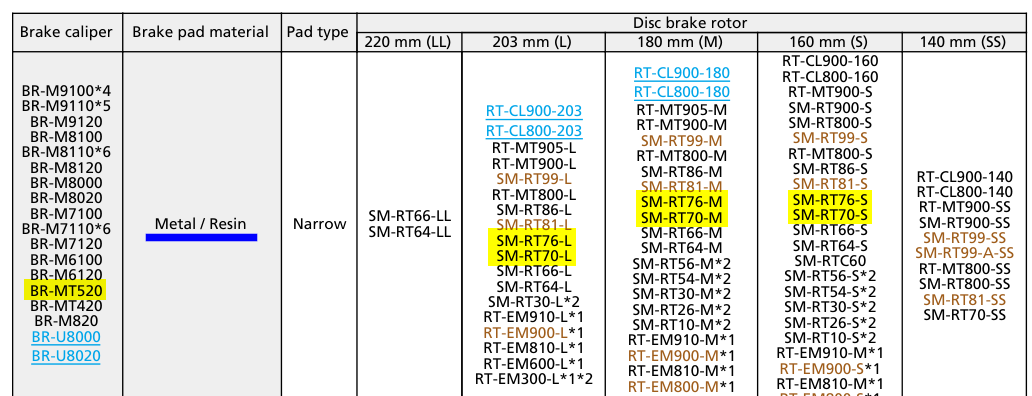From the answers and comments to a question I recently asked about the brake on an e-bike, it seems that metallic or semi-metallic brake pads would be better than resin pads. The bike is frequently ridden up and down a monster of a hill - this may have contributed to the rapid wear on the original brakes.
The rear brakes have been replaced with a Shimano MT500 brake set and a Shimano SM-RT70 disc.
The front brakes are due to be replaced with a Shimano MT500 brake set and a Shimano SM-RT76 disc.
I am considering having the pads on front and back replaced with metallic or semi-metallic pads when I take the bike to have the new front brakes installed.
- Can semi-metallic or metallic brake pads be used with these brakes and discs?
- Will semi-metallic or metallic pads make a difference as far as wear is concerned?
- Will semi-metallic or metallic pads make a difference as far as braking is concerned?
- Will semi-metallic or metallic pads cause more wear on the disc?
The answer from Saaru Lindestøkke tells me what I need to know. I checked what is printed on the brake caliper itself, and it is a BR-MT500
The MT500 can only use resin pads. The compatibility list only shows one entry with compatible pads for the MT500:
That's resin only.
The same thing is shown with in the caliper and disc chart:
Again, resin only.
The disc and caliper chart also gives me cause for concern. It doesn't show the BR-MT500 as being compatible with the SM-RT70 or SM-RT76 discs.
No metallic or semi-metallic pads on this bike, and I'll be asking the guy at the bike shop if the discs are OK to use with the calipers.



